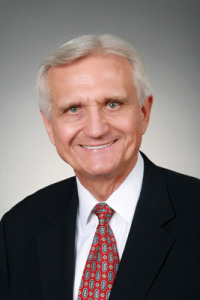
In a few markets, the competition for Native American casinos is from commercial casinos as well as other Native American casinos. In these markets (Florida, Michigan, Lousiana and Mississippi, to cite a few), it appears that the Native American casinos embrace the safe road by not taking full advantage of their unique protected positions.
Let’s consider the state sales tax from which most Native American enterprises are exempt when conducted on reservation land. Rather than wear a white hat claiming the obvious benefits to the patron, real and implied, of “a no-sales-tax zone,” they continue to charge the sales tax. Why? Because they can! Patrons are accustomed to paying the sales tax everywhere else in the immediate area.
A different descriptive term may be used, but the net result is a misrepresentation to the gaming patron. When discovered, the patrons feel duped and immediately become suspicious of all activities at the casino. What confidence should casino patrons have that the casino games they play are not misrepresented, if the operator misrepresents the alleged “tax?”
Transparency is a sound initial marketing strategy. The competitive commercial casinos are required by law to pay the sales tax. Sharing the Native Americans’ unique no-sales-tax benefit with gaming patrons goes far to build loyalty. Everyone enjoys minimizing taxes.
When positioned properly, patrons cite the sharing of this benefit as a motivating factor for casino selection. Inform the patron that there’s no sales tax, and besides increased loyalty from transparency, the casino will benefit when the patron has a bit more money to play in the casino.
The primary independent revenue source for a casino is gambling revenue. The more money patrons play, the greater the profit potential for the casino. Patrons are in a casino to gamble. Money is the measuring stick. The casino should encourage play by minimizing or eliminating unnecessary finance charges.
This particularly applies to ridiculously disproportionate fees for ATM, check cashing and other financial services. Patrons lament the $4 or more ATM fees the casino charges, which are further increased by the patrons’ bank charges. Fees are even greater for check cashing or cash advances. Virtually all patrons who use these financials services put the money immediately in play. So, why charge a fee?
The chief financial officers may view the fees as a significant revenue source, but the CFO is not a gambler. The CFO would never pay similar fees, and does not understand the frustration of the gaming patrons when forced to pay the fees.
The patrons judge the fees as just another way the casino seeks to minimize the patrons’ play time in the casino. Eliminating ATM fees and minimizing other financial fees significantly increases patron casino loyalty. If the CFO is concerned about too many patrons taking advantage of a “no fees” policy, then the program can be presented as an exclusive benefit to higher-tier, higher-value gaming patrons.
Now that we have two strategies to get more money to the gaming patrons, what can we do to improve the patrons’ overall casino experience? Patrons seek more play time in the casino. They seek new games that will give them the perception of more time.
Staying with the general transparency strategy, the casino should introduce new games in a fashion similar to automobiles.
Rather than a showroom of models from one manufacturer, offer the patrons the opportunity to play new games with their own money from multiple manufacturers in a separate, unique area before the games are placed on the general casino floor. There would be total disclosure describing the hold, the degree of volatility, what the patrons can expect in play, the wagering options and what to expect at each wagering option, as well as the bonus minimum and maximum sizes, to name a few. This would educate patrons, leading to a more satisfactory gambling experience. Barona Casino successfully employs a similar practice.
Gaming patrons have indicated time and again they seek to stay in play for their available or allotted time on their predetermined gambling budget.
While they appreciate promotional drawings, they dislike what they perceive as the disproportionate drawing prize sizes. This is particularly true where there is one large-size, say $10,000 prize, and 10 smaller prizes of $1,000 each. There is a far greater chance the patrons will play back the smaller amount as opposed to leaving the casino with the larger amounts to spend on other expenses. A sound marketing strategy is to learn from the patrons what motivates more and deliver the same.
A gaming-centric reward program featuring many relatively smaller prize sizes with heavy emphasis on individual customized rewards works well. Sure, patrons appreciate the food and hotel coupons, but if they have enough time to play in the casino they earn enough comp points to have comped food and comped hotel rooms. It is the play time they seek, and what the casino must deliver.
Gaming patrons have modest expectations, like more time on the machine and less strain on their gaming budget. They do not expect to win life-changing jackpots, or even IRS W2G jackpots. They seek escapism through active participation in casino games in a live casino environment.
The more gaming-centric opportunities—increased free play, hot seats, double prize periods—the casino can present to the patrons, the greater the win for both.






